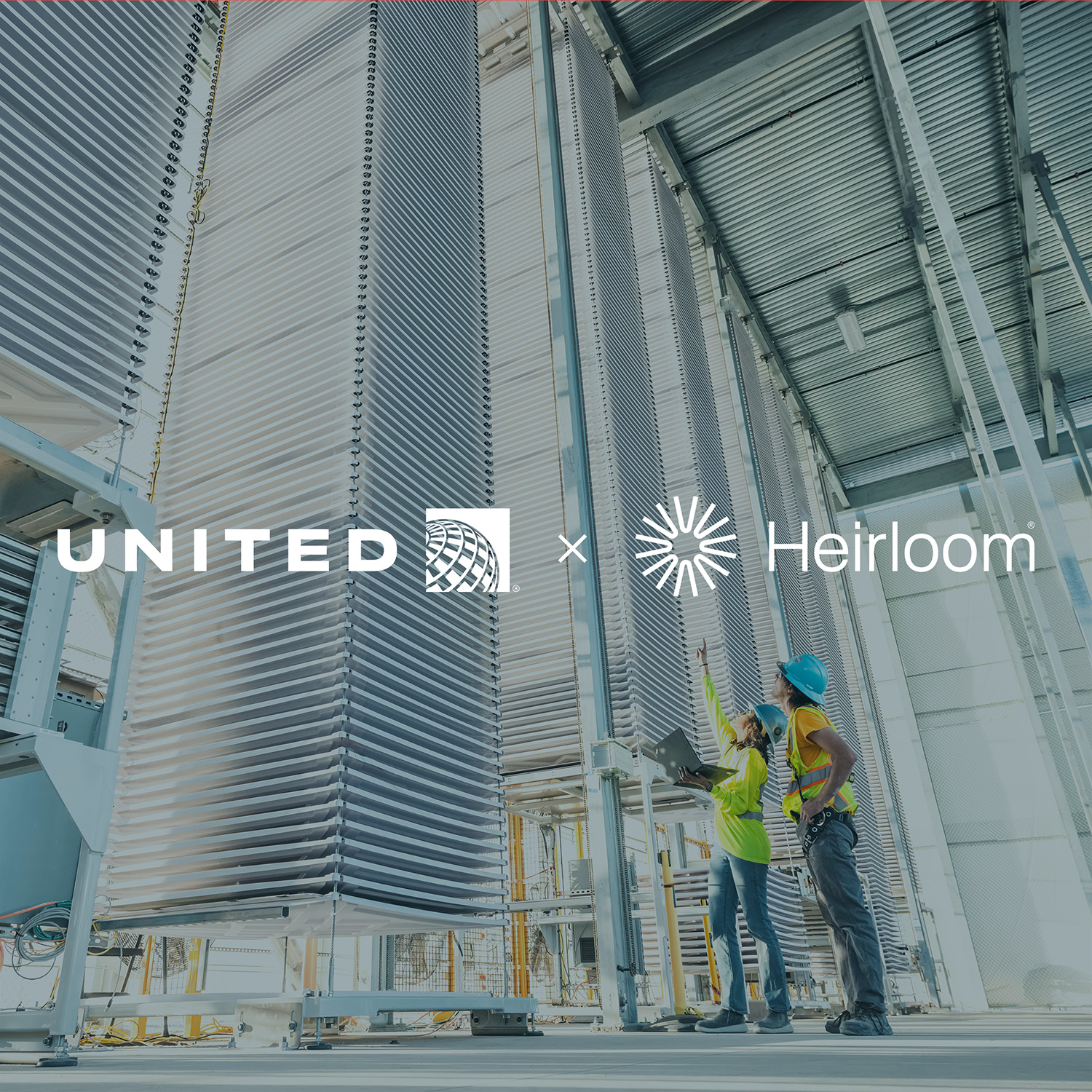Where will Heirloom’s Direct Air Capture facilities be deployed?
With Direct Air Capture (DAC) Hubs on the horizon, we want to share some insight into how we are thinking about siting and deployment of our DAC facilities in the US.
The core ingredients of DAC
In thinking about the ideal location for DAC hubs, our prime consideration is the resources it will take to scale DAC technology to the point where it’s removing billions of tons of CO2 from the air each year. All DAC technology relies on three core inputs: land to site on, energy to drive CO2 absorption and/or desorption, and access to CO2 pipelines to transport CO2 gas to permanent geological storage (or direct access to geologic storage itself).
In most cases, land is not a constraint — DAC can use whatever land is available. Preferably, DAC should be sited on non-arable land so it doesn’t interfere with biodiverse environments or crop production. When it comes to energy, things get a little bit more complicated. To achieve maximum carbon dioxide removal, DAC must use low carbon energy sources such as solar, wind, geothermal, and/or nuclear energy, which are often geologically constrained resources. Finally, and perhaps the biggest constraint, is that DAC technologies need to be co-located with CO2 transportation infrastructure or directly next to CO2 storage wells. Since transporting CO2 creates emissions, DAC technologies should try to co-locate directly with CO2 storage wells.
Additional ingredients in the Heirloom recipe
Heirloom’s technology can be sited anywhere, though some sites are more preferable than others as a consequence of our values as a company and our unique technology.
Sharing the benefits of our technology with disadvantaged communities in accordance with Justice40
Our company was founded on the belief that climate change will have a disproportionate impact on the world’s most vulnerable, and that carbon removal has the potential to be a great equalizer of opportunity.
Our aim is for the large-scale deployment of Heirloom’s technology to not only result in cleaner air and preserved natural ecosystems, but also robust employment opportunities for historically disadvantaged communities. That’s why, when possible, we’d like to site our technology in legacy oil and gas regions and ensure equitable deployment to benefit communities that are overburdened, underserved, and have been disproportionately impacted by climate change and environmental injustice.
Humid environments
In addition to being defined as sorbent and solvent DAC, different DAC approaches can also be characterized as those that like water and those that do not. Heirloom’s DAC process likes water. High ambient humidity levels can accelerate the rate of CO2 uptake by the calcium hydroxide, and use significantly less water overall.
Proximity to limestone
Heirloom’s process starts with limestone, so we need ready access to limestone reserves. Ideally, we want to locate our technology on, or near, limestone mines to minimize emissions from transporting the mineral — ensuring our technology has the highest possible net negativity ratio. Since limestone is widely available in the US (so much so that the US Geological Survey reports them as ‘sufficiently large’), this isn’t a constraint per say, but rather a criteria we consider nonetheless to minimize our environmental impact.
All told, where in the US should we locate our facilities?
Considering all of these parameters, we can map out the most optimal locations for Heirloom’s process.
This map shows the intersection of the ingredients we’re looking for in siting our Heirloom facilities — with the dark blue being the most optimum (9/9 suitability).

This map highlights a few key locations of interest for Heirloom:
- San Francisco, CA — Our home town is a temperate, humid coastal environment which is well suited to DAC.
- Columbia River Valley, WA — A cool and humid environment, rife with suitable geology for CO2 storage and access to renewable energy resources.
- East Texas and Louisiana — hot, humid, and developing storage potential today, and additionally is a region which has communities made marginalized, underserved, and overburdened by pollution and underinvestment.
As we scale the deployment of our technology, we will undoubtedly hone our siting criteria based on real-world experience. However, these north-star principles will form the backbone of our siting strategy for DAC Hubs and beyond.
Read More

Working with United Sustainable Flight Fund to Accelerate Aviation’s Path to True Net Zero

As we conclude this pivotal year, we remain committed to removing billions of tons of carbon dioxide from the air


